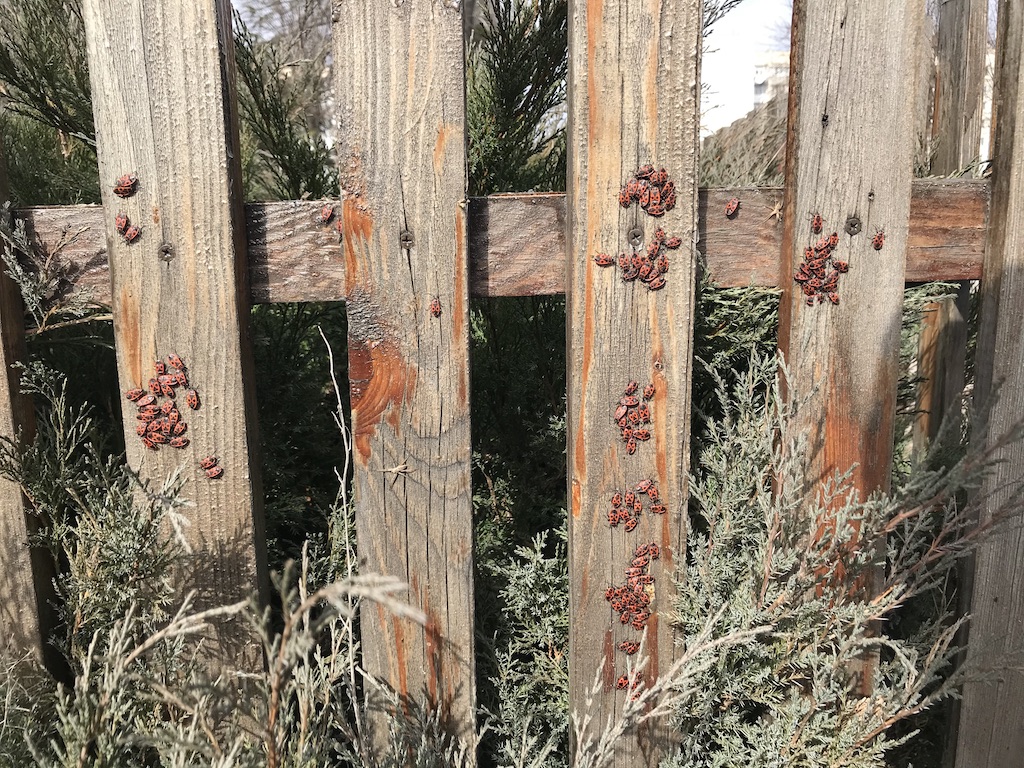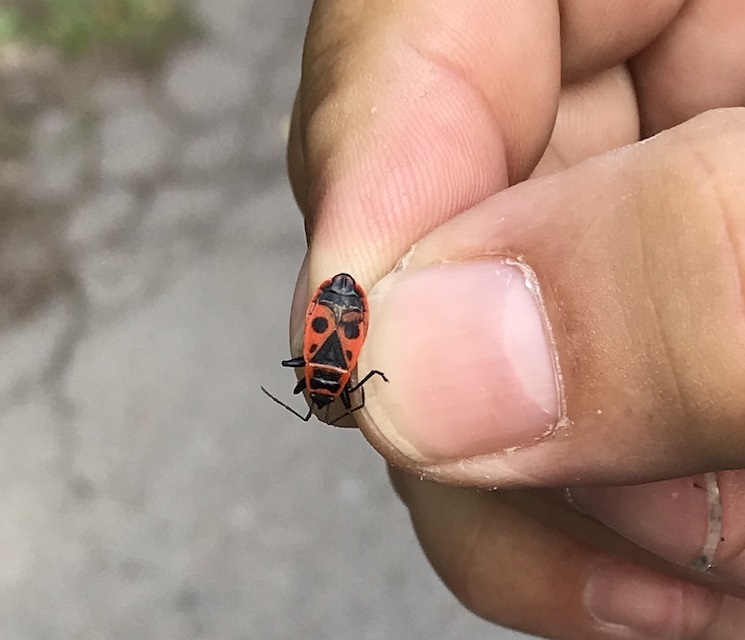
Mutant Firebugs
Jonathon Turnbull

I didn’t know much about firebugs before moving from the UK to Ukraine. Firebugs—Pyrrhocoris apterus—are common ‘true bugs’ (hemiptera) that can be found from the Atlantic coast of Europe to northwest China, and in central America, North America, and India. They are easily recognisable by a distinctive red-black symmetrical pattern on their back.
My first encounter with a firebug was in the Chernobyl Exclusion Zone whilst conducting multispecies ethnographic research. A biologist picked up a firebug and pointed to its asymmetrical back pattern as evidence of the effects of radiation on Chernobyl’s wildlife (Figure 1).

Seeing the effects of radiation made visible—via an apparently materially palpable mutation —satisfied tropes of the ‘mutant’ I’d become accustomed to from sci-fi nuclear narratives(i). However, as a newcomer, still unaware of how to distinguish radiation-induced mutations from random variation, I remained sceptical and inquisitive.
I didn’t expect this firebug encounter at Chernobyl to affect me for any length of time, but since that day, I’ve been noticing them everywhere around Kyiv and other Ukrainian cities. Each time I see one, I bend down to take a closer look, inspecting the pattern on its back to compare it to the one I saw at Chernobyl.
Interestingly, I’m yet to see an asymmetrical pattern on a firebug outside Chernobyl (Figure 2). Whilst this doesn’t prove the Chernobyl firebug was affected by radiation, it seems the Chernobyl encounter triggered a process of ‘knowticing’—a simultaneous noticing and beginning to know more about firebugs and the urban ecologies around me. I was learning to be affected by them as Bruno Latour would say.
Encounters like this shape how we come to know the often-unnoticed critters we share our cities with, as well as the effects of human activities on neighbouring nonhuman bodies. Speculatively, I contemplate how firebug patterns have come to serve a hybrid function: to both ward off predators, and to signal to field scientists the presence of radiation.

--
i. Artist Cornelia Hesse-Honegger has a series depicting mutated leaf bugs in Chernobyl, which Hugh Raffles and Astrid Schrader respectively discuss.
Jonathon is a cultural and environmental geographer at the University of Cambridge who lives in Kyiv, Ukraine and studies the return of nature to the Chernobyl Exclusion Zone.